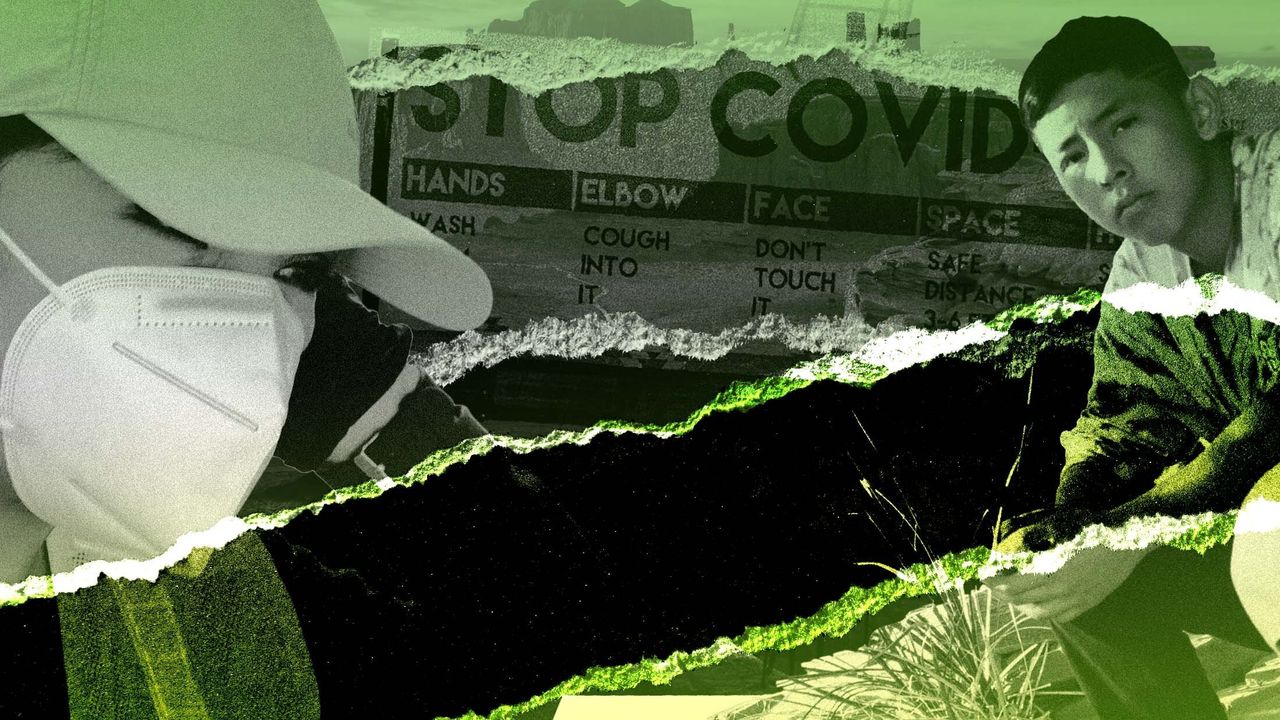This story about education in tribal schools was produced as part of the series Critical Condition: The Students the Pandemic Hit Hardest, reported by HuffPost and The Hechinger Report, a nonprofit, independent news organization focused on inequality and innovation in education.
Samantha Honani’s son hasn’t completed a school assignment in months. After his high school on the Hopi Reservation in Arizona shut down in March, he finished about three weeks of distance learning via his family’s computer. Then, in April, he stopped hearing from his teachers. Caught up in the tumult of COVID-19 and the struggles of sharing one computer with subpar internet, academics faded to an afterthought, Honani said.
“There was a breakdown in communication in the school and the students,” said Honani, who works as a program manager for The Hopi Foundation. “There was no follow-up.”
Initially, Honani put some blame on herself as a mother, chiding herself for failing to stay on top of her son’s teachers and deprioritizing traditional schooling during a hectic time. But while Honani was internalizing the schools’ shortcomings as her own, decisions far away in Washington, D.C., were also having an impact on her child’s education.
Honani’s son attends Hopi Junior Senior High School, which is funded and partially overseen by the Bureau of Indian Education, an agency within the Department of the Interior that manages nearly 200 tribal K-12 schools throughout the country. Implementing distance learning for schools like Hopi High would have been difficult even under the best of circumstances — the school is located on a vast reservation where families often lack access to internet and computers. But evidence suggests that some of the blame for the struggles of BIE schools during COVID-19 lies on the shoulders of the federal government, which consistently bungled its role in helping schools adapt to remote learning and ensure that kids continued to receive an education.
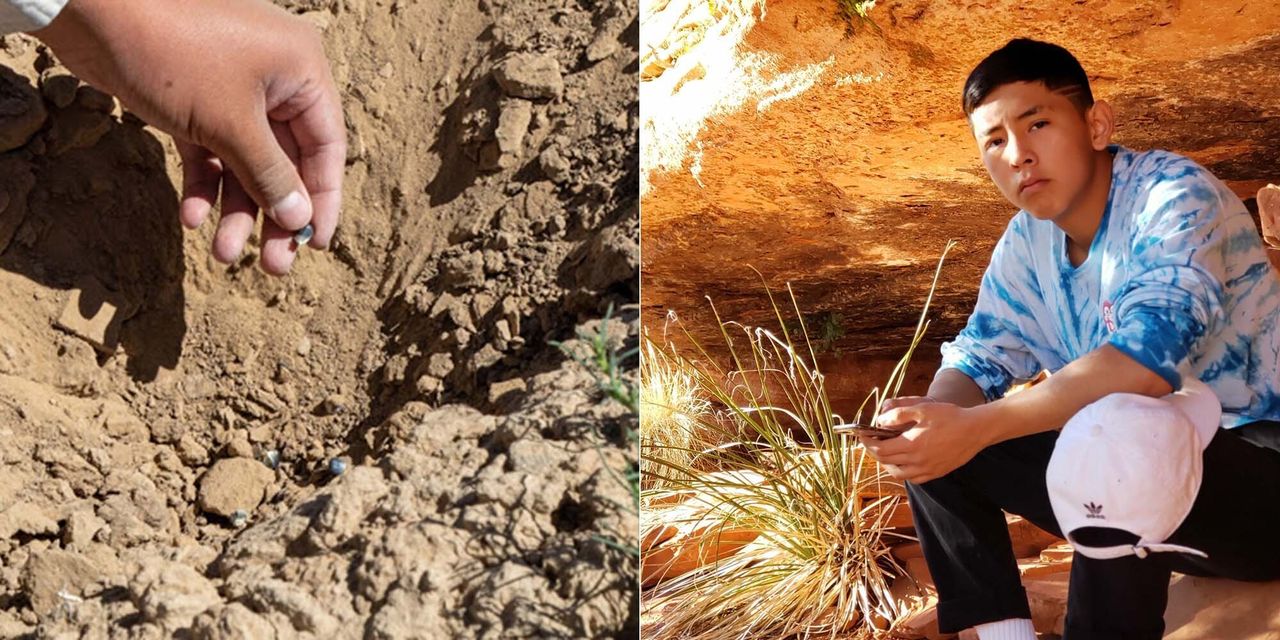
After schools started closing in mid-March, the bureau provided only limited guidance to schools on how they should handle distance learning at a time when other systems had already fully implemented detailed contingency plans. In some cases, nonessential school employees were asked to show up to school after these closures, putting them and their families at increased risk for COVID-19. And later in March, federal lawmakers awarded $200 million to help BIE and tribal schools get students connected to online lessons, but by late June, only a fraction of that cash had been distributed.
For BIE students, the costs of not getting that support are particularly high. While the vast majority of Native American and Alaska Native students attend traditional public schools — the BIE educates less than 10% of Native students — BIE students score significantly lower than their public school counterparts on standardized exams, and overall post some of the lowest scores of any student group. At the same time, the COVID-19 pandemic has hit some Native communities particularly hard. If the Navajo Nation were a state, it would have the highest death rate from COVID-19 in the country. The Hopi reservation has also seen a recent surge in cases.
Not all BIE schools necessarily fell short. But many scrambled to provide students with basic services.
Honani, for one, says she doesn’t know who should be held accountable for her school’s shortcomings and she is sympathetic to the hurdles they faced.
“Teachers are trying to manage the education of hundreds of children, within a setup that lacks internet access and technology access,” said Honani, a member of the school’s parent advisory committee. “If I were a teacher, would I know how to shift to teaching online?”
The school’s superintendent also acknowledged the myriad difficulties staff faced. Many of the school’s educators had difficulty keeping in touch with students because they, like many students, lack a stable internet connection at home. Teachers were required to submit weekly lesson plans, and though distance learning “started strong … there were breakdowns,” acting Superintendent Alban Naha said in an interview. “We’re going to have to find alternative ways.”
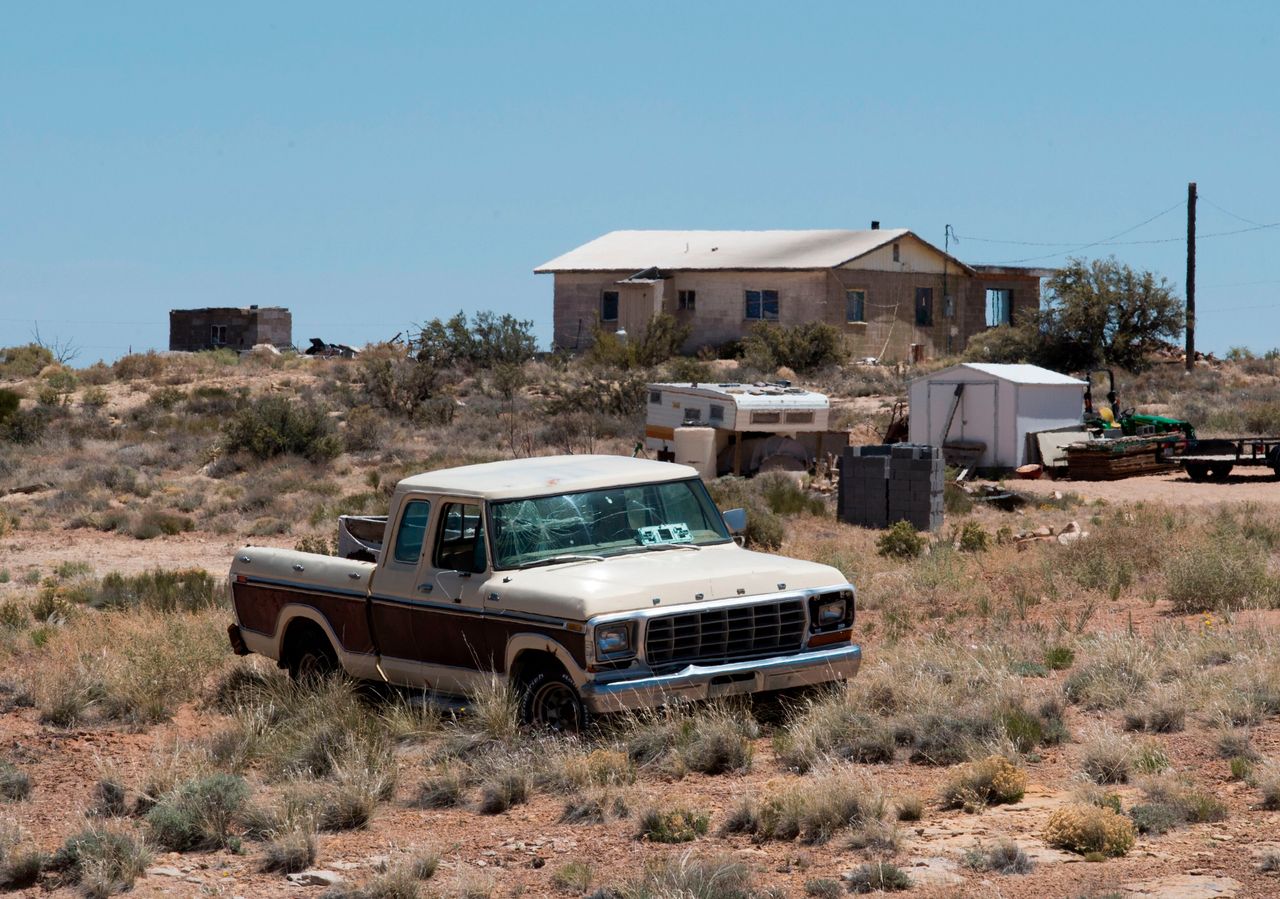
“Not all households have phones or transportation out here,” he added. “We don’t have running water or electricity in some of the villages we service.”
Leaders of BIE, which oversees schools across 23 states, weren’t much help either, Naha said. “There was a lack of the direction we needed.”
Indeed, some say the blame for some of these issues lay squarely with the BIE. As the agency stalled, some local education officials who work on reservations say they were forced to turn to their counterparts in Arizona and New Mexico for assistance in helping students.
“BIE has had the same amount of time as all the other education systems in the country,” said Alexis DeLaCruz, staff attorney with the Native American Disability Law Center. “We understand these are unprecedented times and school systems are literally reinventing how education is happening but the states have done it … The BIE is not doing that for its 183 schools.”
By press time, officials from the BIE had not responded to repeated requests for comment on the agency’s handling of school closures, distance learning or delays in disbursing the funds to its schools.
Schools Slow To Close
From the start of the pandemic, BIE school officials waited for guidance from leaders in Washington. About 50 BIE schools are directly operated by the BIE. The rest of the schools, including Hopi Junior Senior High School, are tribally operated, with the agency providing funding and general oversight.
On March 14, BIE started temporarily closing the schools it operates on a case-by-case basis, and by March 17, all of the agency’s schools had closed or were on spring break, according to an archived version of the agency’s website. That was after 33 states and the District of Columbia had already made the same move.
However, in at least one case, school staff were still asked to show up. In a March 16 memo, the principal of Kaibeto Boarding School in Arizona, a bureau-operated school, asked staff to report to work from March 23 to April 3 while the school was closed, according to a document reviewed by HuffPost.
At least two other schools — including Keams Canyon Elementary on the Hopi Reservation and Rocky Ridge Boarding School on the Navajo Nation — also had students or staff report to school after March 16. Some students and staff at Rocky Ridge later reported symptoms consistent with COVID-19, according to ProPublica.
On March 30, members of the Kaibeto Boarding School’s board started raising alarm bells in an email to school and BIE leaders.
“Many community members [are] stating our school, along with other BIE schools around the Navajo Nation, are currently fully staffed. If this were to be true, I feel as if the BIE is not abiding by the Public Health Orders and Executive Orders issued by our Federal, State and Tribal Leaders,” wrote Dellard Curley, a member of the school board, in the email.
The directive contributed to the spread of COVID-19 within the community, school board members say.
“The majority of our school has the virus. It was passed around because they were having employees report,” said school board member Bahozhoi Kinsel in an interview in May.
The school’s principal did not respond to a request for comment.
The initial confusion was a harbinger of what was to come.
March 30 guidance provided by the BIE on how to implement distance learning was only two pages long and provided mostly generic, boilerplate advice.
One bullet point item in the memo, written by Tamarah Pfieffer, the agency’s chief academic officer, reminds leaders to “teach content.” Another says to “plan for student learning.”
For some school leaders, the message the memo sent was clear: They were on their own.
Meanwhile, some of the school staff members who had continued to report to work in March were getting severely ill, and in some rare cases, dying.
A spokesperson for the BIE did not respond to questions about how many staff members had gotten sick or died. But as of April, The Navajo Times reported that two employees from separate schools died. Curley and Kinsel also said a teacher from their school had died. The Kaibeto principal did not immediately respond to a request for comment on this matter.
Kinsel says she believes the BIE was knowingly negligent in handling the situation.
Meager Guidance
As time went on, tribal leaders continued to prod the BIE for help.
However, when they reached out with specific questions, they were sometimes ignored.
In early April, Darrick Franklin, an education program manager with the Navajo Nation Department of Diné Education, noticed the Arizona and New Mexico departments of education were providing their schools with far more detailed guidance than the two pages the BIE had provided Navajo schools.
The New Mexico Public Education Department had designed a 31-page plan to hold schools accountable for providing services during the last months of school. The guide included tips for online teaching, a five-day training for school staff, clarity on rules for special education and more. That was in stark contrast to the March BIE memo and its platitudes about engaging families.
Franklin wrote to the BIE inquiring about these differences, asking if BIE schools should plan to submit any specific plans to the agency about how they intended to serve students during the shutdown.
His questions were never directly answered. In an email response, Pfieffer, of the BIE, said only that the agency expected all students to be provided with learning opportunities.
“This is going to look different for each student, family and school,” Pfieffer wrote in the email, which Franklin shared with HuffPost/The Hechinger Report.
Because of the BIE’s meager guidance, Franklin turned instead to leaders in New Mexico and Arizona for help and resources. They’ve been far more helpful, he said.
Arizona State Superintendent Kathy Hoffman has met with tribal leaders and representatives from their education departments to get their feedback on distance learning and reopening schools, according to a department spokesperson. In late April, the New Mexico Public Education Department released guidance specifically for tribal schools struggling with internet connectivity, offering immediate solutions for the final weeks of the 2019-20 school year and long-term fixes looking to the fall and beyond.
“It’s like pulling teeth to get [the BIE] to do something,” Franklin said.
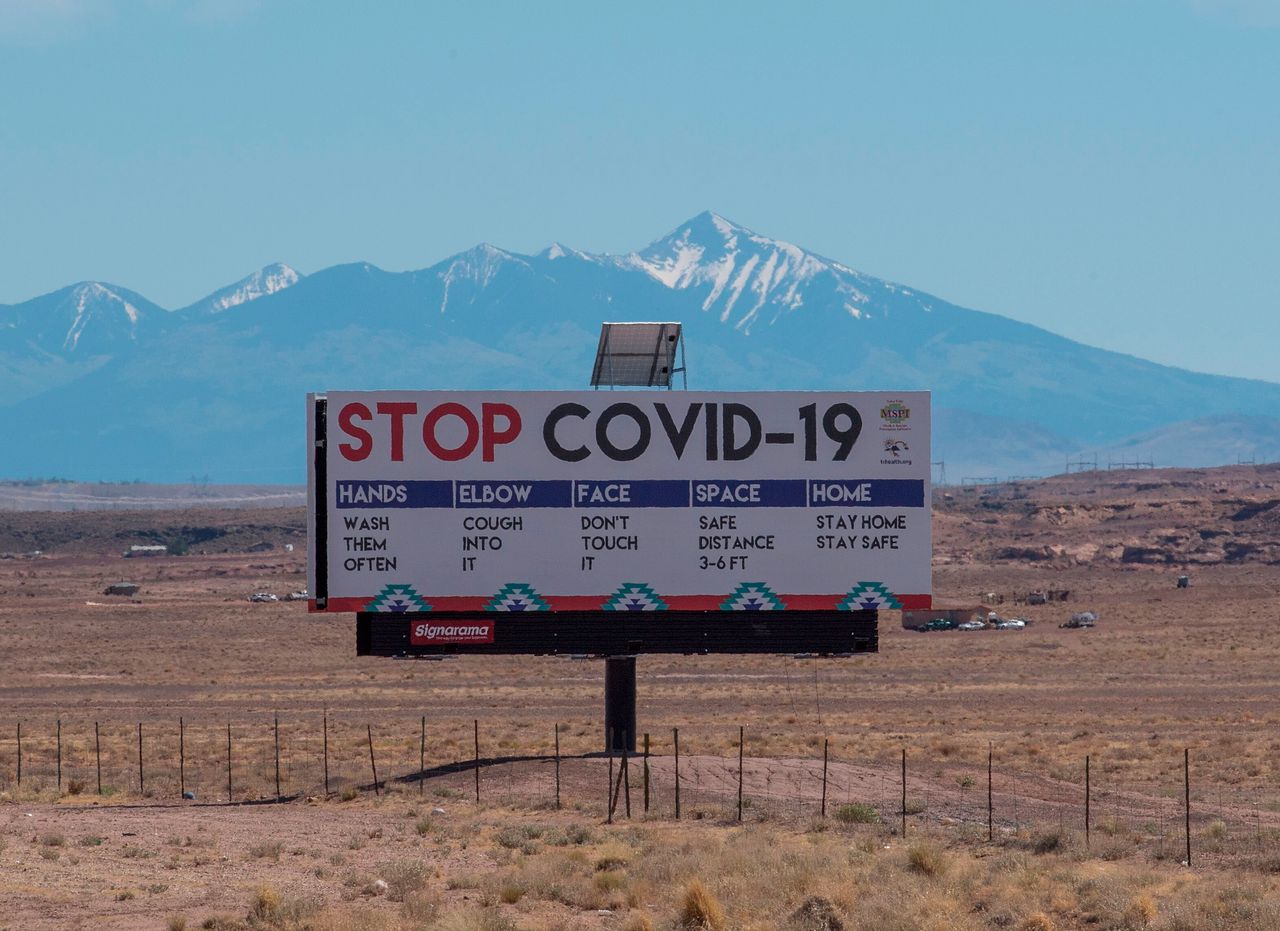
An April survey from the National Indian Education Association, a nonprofit that advocates for Indigenous students, found that students in BIE schools have been given far fewer resources to complete distance learning than their public school counterparts.
Nearly 70% of public schools serving Native students were conducting digital learning, according to the survey. By comparison, only around 30% of BIE schools were doing the same.
At the same time, only 4% of public schools serving Native students closed for the academic year after the emergence of COVID-19, ending all services. That compares with more than 20% of BIE schools.
Families like Honani’s were caught up in the confusion. While the school had continued to communicate with families on Facebook and its website, it tried to avoid snail mail for fear of spreading COVID-19, the school’s superintendent, Naha, said. After Hopi Junior Senior High School closed in mid-March, Honani said she had only received one letter from the school detailing what to expect.
Honani’s son worked on their family computer for one or two hours a day when his school rolled out distance learning in late March, completing classwork. Her family is lucky to have a computer. Many of her neighbors do not.
Hopi Junior Senior High School handed out Chromebooks and hotspots for students who needed them, but that hardly constituted a cure-all. The reservation’s infrastructure couldn’t handle so many people logging on at once, and there was a “vast slowdown,” said Naha.
“It’s been a challenge to deal with some of the things we face that [non-rural schools] don’t,” he said. “We are on an unlevel playing field. It did catch us to an extent to be unprepared.”
On the Navajo Nation, which surrounds Hopi, less than 4% of the population has access to even the most basic wireline broadband, according to federal data.
Stalled Aid
To keep kids learning, BIE and tribal schools needed more resources, fast. When Congress approved $200 million for those schools as part of the CARES Act in late March, it was a welcome development. However, schools have yet to receive most of this money.
As states including Arizona and New Mexico rushed to distribute their share of the federal relief money for schools, the Department of the Interior in April released a two-page information sheet describing how BIE and tribal schools could use $46 million of the emergency aid. The cash could cover the cost of closing schools, transporting students home and providing technology and Wi-Fi for online learning. The department also said its “initial thinking” around how to spend the additional $154 million, which was to be funneled through the U.S. Department of Education, would be to fund the creation of “system wide online learning capabilities and local Wi-Fi connectivity.”
On April 28, the agencies co-hosted a listening session to gather tribal feedback on BIE plans to spend the relief money. But technical glitches hampered the call, frustrating tribal college and school leaders. A rescheduled session, on April 30, seemed to end abruptly, after the platform disconnected attendees.
“We all have lots to do and this attempt is burning daylight,” one school administrator wrote in the webinar’s comments section.
“This is painful,” another added.
Rose Marie McGuire, Indian education manager for Denver Public Schools and an enrolled member of the Sisseton-Wahpeton Oyate, joined the second session and said the technological meltdown did not surprise her.
“It was crazy, but that seems typical for them,” she said, referring to the BIE.
By May 20 — nearly two months after President Donald Trump signed the CARES Act into law — the Affiliated Tribes of Northwest Indians, National Congress of American Indians, National Indian Education Association and United South and Eastern Tribes, which represent tribal governments and schools, grew so frustrated that they wrote a joint letter to the secretaries of education and the interior asking why neither agency had announced how the emergency aid would be released to schools and urging immediate distribution of the funds.
Two days later, Rep. Raul Grijalva (D-Ariz.), chair of the House natural resources committee, issued a press release criticizing the delay.
“Tribal nations are disproportionately suffering from high rates of coronavirus and the Trump administration continues to do nothing for them,” the release reads. “BIE and the Department of Education should release the critical tribal educational funding we included in the CARES Act — yesterday.”
By late June, Hopi Junior Senior High School finally received its portion of the $46 million, but the superintendent said it was only enough for cleaning supplies and personal protective equipment, or PPE. None of it went toward instructional needs.
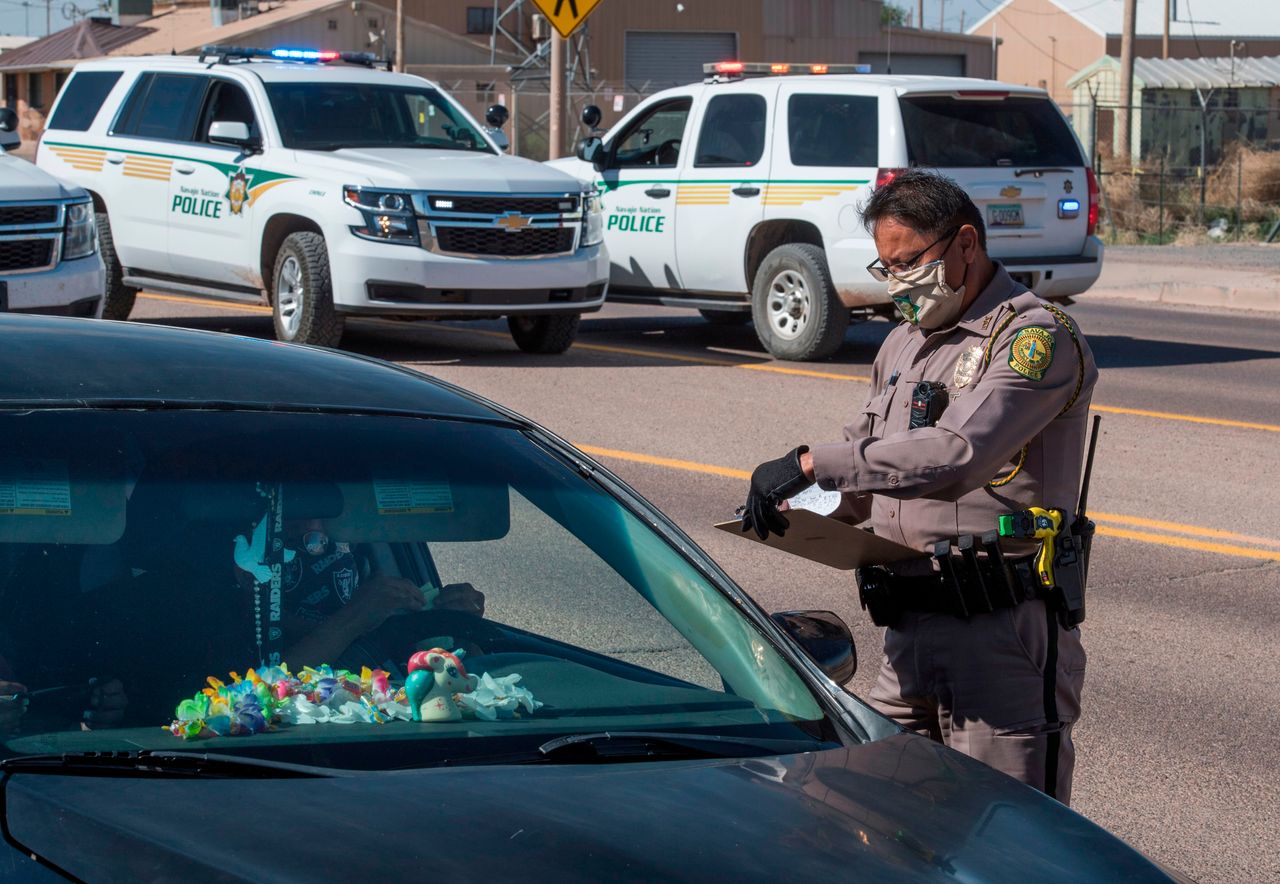
“It is not covering all expenses,” Naha said. “In particular our elementary schools were really hard hit, [and] it’s not even covering their PPE.”
And it wasn’t until June 12 — almost three months since the passage of the CARES Act — that the federal departments signed an internal agreement on how to transfer the $154 million between agencies. The agreement “encouraged” the BIE to get the funding to schools by mid-September.
“It is clear that our education system will conclude the 2019-2020 school year without the emergency relief intended by Congress during the COVID-19 pandemic,” the tribal advocacy groups wrote in another letter, dated June 12. “This continued inaction exacerbates the educational disparities our communities face, in violation of federal trust and treaty obligations.”
“Our students represent the future of our Tribal Nations,” the groups added. “It is truly unconscionable to deny them the resources they need to continue their education amidst a public health crisis.”
After HuffPost/The Hechinger Report asked the BIE to explain its continued delay in funding, a spokesperson said the agency began distributing some of the $154 million to schools on June 26.
“We expect all funds to be allocated over the next week,” the spokesperson said in an email late Friday. As for the $46 million, the spokesperson said the money had been distributed to schools but the “BIE is waiting on paperwork from some schools ... before they can pull down funding for expenditure.”
The spokesperson for the BIE did not provide an explanation for the nearly three-month delay in distributing the money. But in an email, an official with the U.S. Department of Education said its goal was for all states, and the BIE, to get CARES Act funding to schools as quickly as possible.
“However, we know that an SEA [state educational agency], including BIE, will need to put in place needed safeguards and guidance to support local decisions on how to use these funds,” the official said. “Thus, we encourage BIE — and all SEAs — to make every effort to distribute the funds within 90 days, but we know that different schools and Tribal communities may have very different needs and may require additional time to consult their stakeholders in order to maximize the use of the funds.”
Students With Disabilities
Honani, who previously taught elementary school, found it hard to focus on education amid all the chaos happening outside her window. Then, she saw an opportunity.
Her son, a ninth grader, had been educated in Western institutions his entire life. The time off gave her an opportunity to teach him about Hopi values.
“We do have issues around behavior and substance abuse and suicide rates. Those are the silent battles we’re fighting here, in our reservation communities,” said Honani. “This is a time for us to really mold and nurture and guide the kids, rather than having it being done in a school setting, a very Western, non-Hopi setting.”
While Honani works full time on COVID-19 relief efforts through her job at the Hopi Foundation, her son has been planting a garden. He is growing traditional Hopi corn and beans, squash, melons and potatoes. Out of this activity comes respect for history, science, land and the weather, she said.
She doesn’t think about what her son has lost these past few months ― instead she tries to focus on what he can gain.
But not all children have that same opportunity. For vulnerable students, including those with disabilities, the lack of formal schooling these months could have a devastating impact.
As an attorney, Alexis DeLaCruz represents Native students with disabilities. She is currently working with clients from five different BIE schools. Her clients, who rely on an array of special services at school, are especially vulnerable to learning loss during distance learning. But their schools have all but abandoned trying to educate them, she said.
DeLaCruz said some students haven’t received hardly any services since their schools closed. When parents have called school leaders and teachers, they’ve just found full voice mailboxes, and when they’ve written, they’ve received no response, she said. Some families received early bits of communication, but follow-up faded as the months went on. She speculates that teachers are communicating with children on a case-by-case basis, without clear guidance or support from their schools.
“That’s what we’re seeing — no consistency, no communication, no plan in place, and no learning,” she said.
DeLaCruz started prodding the BIE with questions in the context of her individual cases on April 7. Later in the month, her organization and nearly 50 other disability rights and civil rights groups wrote the agency asking it to ensure students with disabilities were provided with critical services. Her concerns grew every day that she saw her clients falling further and further behind.
To date, the BIE has not responded to DeLaCruz or her organization.
“Right now things are very dire here in our community, but that doesn’t mean families don’t want their kids to continue to have access to education,” she said. “The Bureau of Indian Education is just leagues behind their states’ counterparts and there’s no justifiable reason why.”
A spokesperson for the Bureau of Indian Education did not respond to requests for comment on this matter.
Now, as the death toll on the Hopi Reservation continues to rise, it is unclear when students will return to school.
This week, the BIE sent a notice on its intention to consult with tribes on a school reopening plan. But once again, it already feels like too little, too late.
“A lot of states have already developed reopening plans, and we’re still holding consultation sessions,” said Naha. “We’re sometimes a step or two behind and it can be frustrating for us.”
Honani said she would support school closures extending into next year, out of concern for the safety of the community. But she has a difficult time imagining what many more months of distance learning might look like.
“With the schools not opening we’re going to have to step up as parents and families to play a role in our kids’ education,” said Honani. “I’m gonna be OK. I have the ability. I have the equipment. But I can’t speak for everybody else.”
- Stay up to date with our live blog as we cover the COVID-19 pandemic
- 7 essential pieces of relationship advice for couples in quarantine
- What you need to know about face masks right now
- How to tell if you need to start doing online therapy
- Lost your job due to coronavirus? Here’s what you need to know.
- Parenting during the coronavirus crisis?
- The HuffPost guide to working from home
- What coronavirus questions are on your mind right now? We want to help you find answers.
- Everyone deserves accurate information about COVID-19. Support journalism without a paywall — and keep it free for everyone — by becoming a HuffPost member today.
